Ground squirrels can cause extensive damage to homes, gardens, and landscaping through their burrowing behavior and feeding habits. This comprehensive guide draws on research-backed methods from agricultural extension programs and wildlife experts to help you effectively identify, prevent, and eliminate ground squirrel problems using both humane and conventional approaches.
Quick Picks: Best Ground Squirrel Control Products
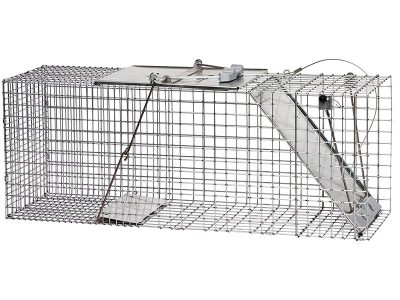
Humane Option
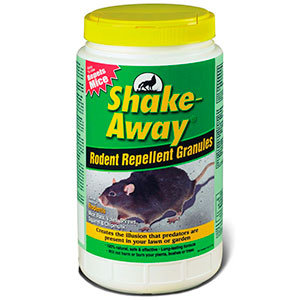
Best Repellent
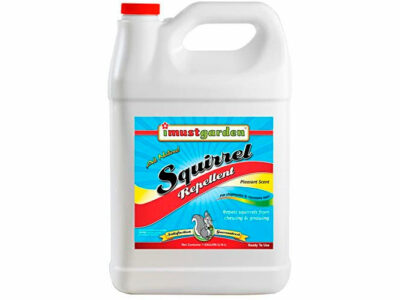
Pet Safe Option
What is a Ground Squirrel?
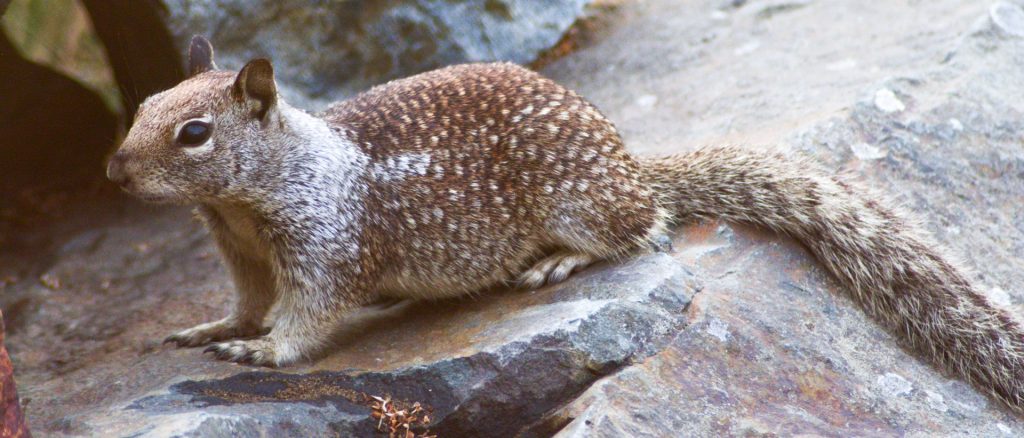
Ground squirrels are burrowing rodents belonging to the family Sciuridae, with over 62 species found worldwide. Unlike tree squirrels, they spend most of their time on or below ground rather than in trees, creating extensive tunnel systems for shelter, food storage, and raising their young.
Physical Characteristics
Medium-sized rodents weighing 7-27 ounces, with streamlined bodies, non-bushy tails, and mottled gray or brown fur. Some species have stripes or speckled patterns on their fur.
Habitat
Ground squirrels prefer open grasslands, meadows, agricultural fields, and sparsely wooded hillsides. Their burrow systems can be 5-30 feet long with multiple entrances and complex chambers.
Diet
Omnivorous diet consisting of seeds, nuts, grains, fruits, plants, roots, insects, and occasionally small vertebrates. Their feeding habits shift seasonally from green vegetation in spring to seeds in summer.
According to the University of California Integrated Pest Management Program, ground squirrels can be distinguished from tree squirrels by their behavior when frightened: “Ground squirrels will always retreat to a burrow when frightened, while tree squirrels will climb a tree or other tall structure.”
Ground Squirrel vs. Tree Squirrel vs. Chipmunk
Understanding the differences between these similar-looking rodents is crucial for effective control, as each requires different management approaches.
| Characteristic | Ground Squirrel | Tree Squirrel | Chipmunk |
|---|---|---|---|
| Size | 7-27 oz.; up to 12 inches long | 14-24 oz.; 14-16 inches long | 2-5 oz.; 8-10 inches long |
| Tail | Less bushy; held low when running | Bushy; held behind when running | Fuzzy; held upright when running |
| Habitat | Ground burrows | Trees, attics, exterior structures | Ground burrows, rock crevices |
| Behavior | Retreats to burrows when threatened | Climbs trees or structures when threatened | Retreats to burrows or hides |
| Damage Pattern | Extensive burrowing, foundation damage, crop destruction | Attic invasion, wiring damage, garden raiding | Smaller burrows, seed consumption |
Evidence of Ground Squirrel Damage
Ground squirrels can cause significant structural and landscape damage that extends well beyond simple aesthetic concerns. Recognizing the signs of their presence is the first step in effective management.
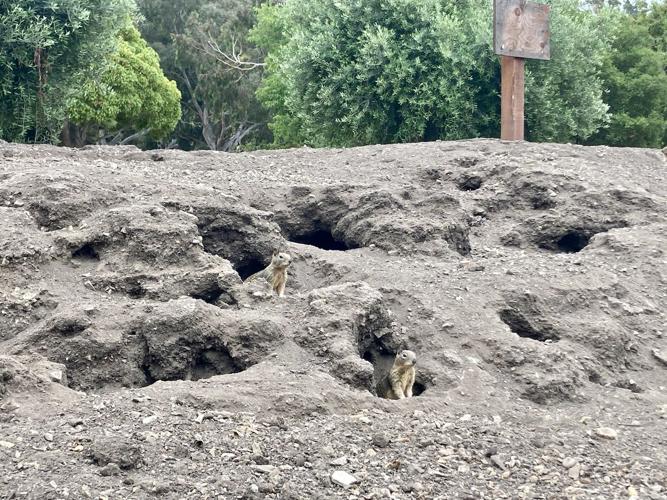
Typical ground squirrel burrow entrance with surrounding dirt mound
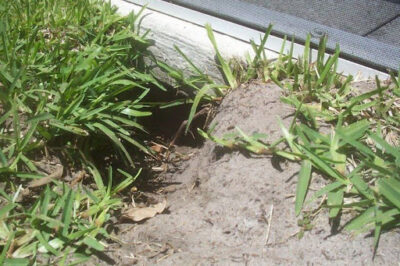
Structural damage to foundation from extensive burrowing
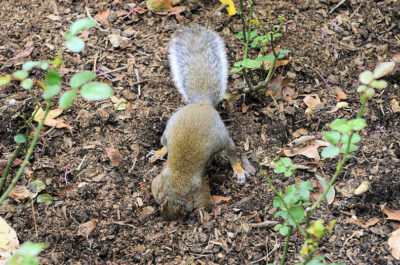
Garden and crop damage from ground squirrel feeding
According to the Contra Costa County Department of Agriculture, “Ground squirrel tunneling weakens levees, flood control facilities, canals, and earthen dams. Their burrows undermine the integrity of water-holding structures, which creates serious legal and safety concerns.”
What Attracts Ground Squirrels
Understanding what draws ground squirrels to your property is essential for implementing effective prevention and control strategies.
Food Sources
Gardens, fruit trees, bird feeders, pet food, compost, and unsecured garbage provide abundant food opportunities that attract ground squirrels.
Water Sources
Reliable access to water from irrigation systems, ponds, pools, leaky faucets, or pet water dishes makes your property more attractive.
Shelter & Safety
Open spaces with adjacent cover (woodpiles, rocks, shrubs) provide ideal conditions for burrowing while offering protection from predators.
Integrated Pest Management for Ground Squirrels
The most effective approach to ground squirrel control follows Integrated Pest Management (IPM) principles, which focus on using multiple strategies in combination rather than relying on a single method.
The University of California Statewide IPM Program defines Integrated Pest Management as “an ecosystem-based strategy that focuses on long-term prevention of pests or their damage through a combination of techniques such as biological control, habitat manipulation, modification of cultural practices, and use of resistant varieties.”
13 Effective Methods to Get Rid of Ground Squirrels
1. Natural Repellent Sprays
I Must Garden Squirrel Repellent
Pet Safe OptionHow Does It Work
How to Use
- Spray liberally on plants, structures, and areas affected by ground squirrels
- Apply around the perimeter of gardens and planting beds
- Treat the base of trees, shrubs, and other plants ground squirrels target
- Create a protective barrier around structures and foundation areas
- Reapply every 30 days or after heavy rain
- For severe infestations, apply more frequently initially
- Safe for use around children and pets when used as directed
- Pleasant cinnamon scent for humans
- Does not harm plants or garden areas
- Easy to apply with ready-to-use spray
- Rain-resistant formula provides lasting protection
- Requires regular reapplication for continued effectiveness
- May not be sufficient as a standalone solution for severe infestations
- More expensive than some homemade alternatives
- Results may vary depending on the local ground squirrel population
- Not effective against all rodent species
Natural repellent sprays use strong scents and tastes that ground squirrels find offensive, encouraging them to avoid treated areas.
DIY Natural Spray Recipe
- 1 cup of cayenne pepper or crushed garlic
- 2 quarts of hot water
- 1 tablespoon of biodegradable dish soap
- Soak the pepper or garlic in hot water for 12-24 hours
- Strain the mixture and add dish soap
- Transfer to a spray bottle and apply around burrow entrances and affected areas
- Reapply after rain or every 3-5 days
2. Predator Urine
Shake Away Fox Urine Granules
Best RepellentHow Does It Work
How to Use
- Sprinkle granules around the perimeter of areas you want to protect
- Apply around burrow entrances and ground squirrel activity areas
- Create a barrier approximately 3-4 feet wide
- Reapply every 30-45 days or after heavy rain
- Use more frequently in areas with higher ground squirrel activity
- For best results, use in combination with other control methods
- Non-toxic and environmentally friendly
- No harm to ground squirrels or other wildlife
- Easy application with no special equipment needed
- Effective as part of an integrated management approach
- Safe for use around plants and garden areas
- May require frequent reapplication
- Less effective during rainy periods
- Results vary depending on squirrel population pressure
- Not a complete solution for established infestations
- Scent may be unpleasant to some people
Predator urine products leverage ground squirrels’ natural fear response to predators like foxes, coyotes, and wolves.
These products work best when:
- Applied around the perimeter of your property
- Placed near active burrow entrances
- Used in combination with other control methods
- Reapplied regularly according to manufacturer instructions
3. Deterrent Plants

Certain plants contain natural compounds that ground squirrels find repulsive or avoid eating.
4. Exclusion Methods
Physical barriers can effectively prevent ground squirrels from accessing specific areas of your property.
Montana State University Extension recommends that “When installing hardware cloth to exclude ground squirrels, it should be buried at least 6-12 inches deep with an additional 6-8 inches bent outward at a 90-degree angle to prevent burrowing underneath.”
Effective exclusion strategies include:
- Hardware cloth (¼-inch mesh) buried around garden beds
- L-shaped footer barriers around structures
- Metal flashing around tree trunks
- Concrete barriers extending below ground level
5. Habitat Modification
Making your landscape less hospitable to ground squirrels can discourage them from settling on your property.
Remove Cover
Clear brush piles, debris, and overgrown vegetation that provide hiding places and nesting material.
Eliminate Food Sources
Use squirrel-proof bird feeders, pick up fallen fruit, and secure garbage and compost in wildlife-proof containers.
Control Water Access
Fix leaky faucets, drain standing water, and adjust watering schedules to avoid creating attractive water sources.
6. Predator Decoys
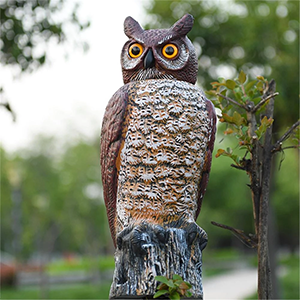
Decoys mimic the presence of natural predators, creating a perception of danger that may deter ground squirrels.
For maximum effectiveness, research from university extension programs indicates that predator decoys should be moved frequently (every 2-3 days) to prevent ground squirrels from becoming habituated to them.
- Owl decoys positioned on poles near affected areas
- Hawk silhouettes mounted where they can move in the wind
- Realistic snake replicas placed near burrow entrances
- Electronic decoys with motion or sound features for enhanced effect
7. Sound and Vibration Devices
Various electronic and mechanical devices produce sounds or vibrations intended to disturb ground squirrels and make an area uncomfortable for them.
According to Montana State University Extension research, “Ultrasonic devices have not proven to control, disturb or displace ground squirrels when tested in unbiased research trials.”
More effective options include:
- Wind chimes and other mechanical noise makers
- Motion-activated alarms with predator sounds
- Vibrating stakes inserted into the ground near burrows
8. Live Trapping
Havahart Live Animal Trap
Most HumaneHow Does It Work
How to Use
- Place the trap near active burrow entrances or along known travel paths
- Bait with peanut butter, nuts, or fruits placed at the rear of the trap
- Position the trap on flat ground with both ends level
- Check the trap at least twice daily for humane reasons
- Wear gloves when handling the trap to reduce human scent
- Release captured squirrels at least 5 miles away in suitable habitat (where legally permitted)
- Humane capture without harming the animal
- Reusable for long-term control
- Effective when properly placed and baited
- Safe for operators and non-target animals when used correctly
- No chemicals or poisons required
- Requires regular monitoring
- May capture non-target animals
- Less effective for large infestations
- Relocation may be restricted in some areas
- Multiple traps may be needed for effective control
Live trapping is one of the most effective methods for removing ground squirrels, especially for smaller infestations or in areas where other control methods aren’t appropriate. After successfully trapping and relocating ground squirrels, it is essential to implement strategies to prevent their return. Gardeners can explore various methods, including natural repellents and physical barriers, to learn how to deter squirrels from gardens effectively. By creating an environment that is less attractive to these pests, homeowners can safeguard their plants and maintain a healthy garden space. Additionally, live trapping allows for the safe capture and relocation of ground squirrels without harming them, making it an environmentally friendly choice. For those dealing with a more invasive problem, like squirrels nesting inside structures, researching how to remove squirrels from walls can provide effective solutions. It’s crucial to seal entry points after removal to prevent future infestations. Additionally, live trapping allows for the humane relocation of squirrels, minimizing harm to the animals and the environment. This method can also be beneficial in situations requiring squirrel removal from attic spaces, where traditional control methods may pose risks. By using traps specifically designed for ground squirrels, homeowners can effectively manage their pest problems while adhering to wildlife protection regulations.
Montana State University Extension confirms: “Trapping is an effective way to manage individual or small populations of ground squirrels. For most organic farmers, this may be the most practical method of control.”
Tips for successful live trapping:
- Place traps near active burrow entrances or along travel paths
- Pre-bait the area for several days before setting traps
- Use attractive baits like peanut butter, nuts, or fresh fruits
- Check traps at least twice daily for humane reasons
- Wear gloves when handling traps to minimize human scent
- Relocate captured squirrels at least 5 miles away across a body of water when legal
9. Lethal Trapping
In situations where live trapping isn’t feasible or allowed, lethal trapping may be necessary for effective control.
Always check local regulations before using lethal traps, as they may be restricted in some areas. Keep traps inaccessible to children, pets, and non-target wildlife.
Common lethal trap options include:
- Body-gripping (Conibear) traps placed at burrow entrances
- Modified snap traps secured to prevent removal
- Multiple-catch traps for larger infestations
10. Fumigation
Burrow fumigants introduce toxic gases into ground squirrel tunnels, which can be highly effective when soil conditions are appropriate.
According to the University of California Cooperative Extension, fumigation works best in spring when soil moisture is high and before ground squirrels have produced offspring. Fumigation is less effective in summer when soil is dry and may allow gas to escape.
Key considerations for fumigation:
- Most effective in moist soil conditions (spring or after irrigation)
- Only use registered fumigants according to label instructions
- Seal all visible burrow openings after application
- Never fumigate near buildings or structures
- Professional application may be required in many jurisdictions
11. Baiting
Baiting involves the strategic placement of poison baits to control ground squirrel populations, though this method comes with significant restrictions and safety concerns.
Most rodenticide baits for ground squirrels are restricted-use products that require a pesticide applicator’s license. Always check current regulations before considering this option, as laws vary by location and change over time.
12. Burrow Destruction
Physically collapsing or filling burrow systems can eliminate existing habitat and discourage re-infestation.
Effective Burrow Filling Methods
- Sand-Water Slurry: A mixture of fine sand and water pumped into burrows creates a solid fill as water drains away
- Expanding Foam: Commercial expanding foam products designed for pest exclusion can seal burrow entrances
- Gravel and Soil: Filling with gravel topped with compacted soil makes re-excavation difficult
- Concrete: For permanent elimination of burrows near foundations or critical structures
13. Professional Pest Control
When DIY methods prove insufficient or when dealing with severe infestations, professional pest management services offer expertise, specialized equipment, and access to restricted control methods.
Professional pest management companies typically employ an Integrated Pest Management (IPM) approach that combines multiple control techniques tailored to your specific situation, ensuring more effective and sustainable results.
Benefits of professional services include:
- Proper identification of the specific ground squirrel species
- Comprehensive property assessment to identify all burrows and entry points
- Knowledge of local regulations and permit requirements
- Access to professional-grade equipment and restricted materials
- Follow-up monitoring and prevention recommendations
Prevention of Ground Squirrels
Preventing ground squirrel infestations is far easier and more cost-effective than eliminating established colonies. Implement these preventative measures to keep ground squirrels from making your property their home:
Regular Maintenance
Keep your yard well-maintained with regular mowing, trimming of vegetation, and prompt removal of fallen fruits, nuts, and debris.
Buffer Zones
Create gravel or hardscape buffer zones (at least 2-3 feet wide) around foundations, garden beds, and structures to discourage burrowing.
Regular Inspection
Conduct routine checks of your property for signs of burrowing activity, addressing any new holes or burrows immediately before colonies establish.
Creating habitat for natural predators like owls and hawks can help keep ground squirrel populations in check. Consider installing owl nesting boxes in appropriate locations around your property.
Is it Legal to Kill Ground Squirrels?
The legality of lethal control methods for ground squirrels varies significantly by location and specific species, making it essential to understand your local regulations before implementing any control strategy.
Before using any lethal control method, check with your local wildlife agency, agricultural extension office, or county agricultural commissioner to understand current regulations and permit requirements in your area.
Important legal considerations include:
- Some ground squirrel species may be protected in certain regions
- Many jurisdictions require permits for trapping or relocating wildlife
- Use of rodenticides is heavily regulated and may require professional licensing
- Some control methods may be prohibited in urban or residential areas
- Restrictions may vary seasonally or change based on population status
Frequently Asked Questions
How deep do ground squirrel burrows go?
Ground squirrel burrow systems typically range from 5 to 30 feet in length with multiple chambers and entrances. Most tunnels are found within 2-3 feet of the surface, though some portions may extend deeper, especially in mature colonies.
According to the University of California Cooperative Extension, burrow depth varies by species and soil conditions, with California ground squirrels sometimes creating burrows that reach up to 6 feet deep in optimal conditions, making them particularly problematic for foundations and structures.
When is the best time to control ground squirrels?
The most effective time for ground squirrel control is early spring when they emerge from hibernation and before they reproduce. During this period, populations are at their lowest, and adults are actively foraging as they recover from hibernation.
Montana State University Extension emphasizes that “Timing of ground squirrel control is very important. Timing may be the most critical factor affecting success. Early spring is the target period for control. Control measures prior to the birth and emergence of young ground squirrels will be much more efficient.”
Do ultrasonic repellers work against ground squirrels?
Scientific research has consistently shown that ultrasonic repellers are ineffective for ground squirrel control. Despite manufacturer claims, these devices have not demonstrated reliable results in controlled studies.
Montana State University Extension specifically states: “Ultrasonic devices have not proven to control, disturb or displace ground squirrels when tested in unbiased research trials.” Your money is better spent on evidence-based control methods.
Are ground squirrels dangerous to humans?
While ground squirrels rarely attack humans, they can pose indirect health risks as potential carriers of diseases such as plague, tularemia, and leptospirosis. Their burrowing activity can also create dangerous tripping hazards and undermine structural foundations.
The California Department of Public Health recommends avoiding direct contact with ground squirrels or their fleas, properly disposing of any dead squirrels with gloves, and promptly addressing infestations to minimize disease transmission risks.
Can I relocate ground squirrels I’ve trapped?
Relocation of ground squirrels is often restricted by local wildlife regulations and may not be humane or effective. Many jurisdictions prohibit the release of captured wildlife on public lands or private property without permission.
Research from Montana State University suggests that relocated ground squirrels face poor survival prospects: “If a ground squirrel is released, it will normally try to return to its home. It will almost always die of exposure, starvation, predation, etc. Putting it with an existing colony will be futile because the resident animals will drive it away.”
Conclusion
Ground squirrels can cause significant damage to landscapes, gardens, and structures, but with the right approach, they can be effectively managed using an integrated pest management strategy. By combining multiple control methods and addressing the factors that attract them to your property, you can minimize damage and prevent future infestations.
The University of California Integrated Pest Management Program recommends a combination of control techniques rather than relying on a single method. This integrated approach provides more sustainable and effective results while minimizing environmental impacts.
Remember that the most effective ground squirrel management plans:
- Begin with proper identification of the species
- Implement controls during optimal seasonal timing
- Use multiple complementary control methods
- Address environmental factors that attract squirrels
- Include ongoing monitoring and maintenance
- Comply with local regulations and permit requirements
By understanding ground squirrel biology and behavior and implementing comprehensive management strategies, you can effectively protect your property while minimizing impacts on the environment and non-target wildlife.

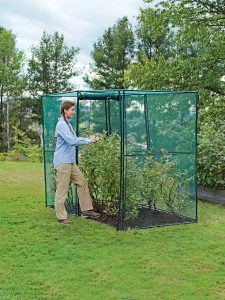
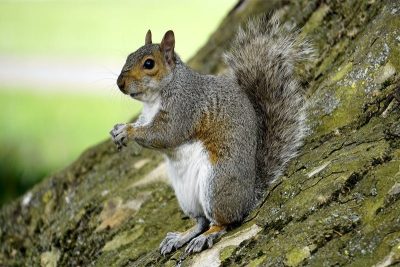

In PA and have two to four ground squirrels that have been digging up my summer outdoor plants. They are living in our generator and in my garden…do not want to poison them, but need to have them gone….
I read every single comment. No one mentioned plaster of Paris mixed with oatmeal. the plaster dehydrates them and hardens inside them and kills them. Has anyone tried this method? I’ve been using it for a bout two weeks and the population seems to have definitely gone down, but still having them come. Anyone know it works for sure? Don’t know if it’s just a coincidence. Ran out of oatmeal, but have caught a Gian rat with the sunflower seeds in a bucket over water and will go back to that method, but it’s more work and gruesome.
I had a large colony outside my home over about 2 acres area. I used a high powered air rifle to shot 6 of them and placed the deceased in all of the major entrance ways. The entire colony packed up and I have not seen one ( not 1) since I executed the plan in March 2021.
I have caught three ground squirrels so far in a cage. I transport them about a mile away. Will they find their way back?
Ground squirrels are not able to physically travel more than about a mile from where they were born. If you release them in the general vicinity that is familiar to them, and with food available, they will likely stay there.
If necessary, release in an unfamiliar area; but again ground squirrels do not like new environments unless food and shelter are available. They prefer their home range.
The EZ traps sound good. Do they hurt other animals such as cats or dogs? When baited with bubble gum, wrapped, unwrapped or pre chewed??? LOL
My live trap and rain barrel works great.
Since cats are a predator the them, using USED cat litter works 100% of the time. Sprinkle used litter around fences, existing holes, etc. After a few days the scent will be noticeable to them and bc they’ll think a cat is nearby, they quickly move on!
Dont b stupid and use poision. Go to air gas get a botle of CO2. (for puting carbonnation in soda) run a line from co2 into ground squirl or gofer hole burry hose. At 15 psi leave in ground fir 5 mins per hole. What it dies is take out oxygen out of the air and kills them , and its oderless they dont hear it comeing.
If I use the bubble gum do they die in the burrow or do they come out?
I have lost 3 older work vans to ground squirrels chewing up the wiring in the engines. a fellow cattle rancher told me to use bubble gum and do not remove the wrapper. I threw them down holes and around the ground. It was like a plague hit. Smart & final has the bags.
I have a ranch in oregon and I’am indicated with ground squirrels. Every spring when they emerge the battle is on…I heard from a rancher that he uses cabbage with some kind of poison??
One other neighbor used gas with a hose from his truck to kill gophers would that work for killing the ground squirrels too.
please advise they have literally ruined a whole field….I want them gone
ASAP
Chipmunk. Huge den which was weakening an old dry stone retaining wall. Found main hole and put hose in it for over an hour before water finally started coming out of another hole 20 feet away.
I’m glad to hear all the ways to get rid of ground squirrels. Had some in my house and ended up using a thermal camera and 22 snake shot, even had to shoot one in my wall.Not the best way I’m finding out, but effective at the time
The image of the Systemic Insect granules must be a mistakenly placed image and should be for the product “Pest Rid granules”. Systemic Insect control controls insects, not squirrels.
Most effective control of Richardson’s ground squirrels is shooting small populations. 20 ga improved cylinder with 7 1/2 STEEL shot (to avoid secondary Pb poisoning of nontarget spp.).
Also try bazooka bubble gum down active holes. If eaten, causes fatal impaction of GI tract.
Juicy Fruit gum worked wonders for many years. This year the infestation exploded, mainly because our ground squirrel eating tom cat is no longer with us. He would kill and eat the ones that the gum didn’t get. Bummer.
Squirrelinator
Inject lpg in their tunnel cover and use a remote detonator. Kaboom
To anonymous who begins, “your all big babies!”, you obviously don’t have the problem. All these rodent type critters can eventually destroy your home and before that can cause sinkhole in your lawn as the den becomes larger and larger with up to 100 feeder tunnels. Don’t wait to try some of the methods listed here to get rid of them. I looked the other way hoping they would disappear or that my dogs or cat would take care of them but they multiply so rapidly they are too much for 2 or 3 domestic animals. Unless you have the problem, don’t try to comment on those of us trying to control them.
To anonymous who begins, “your all big babies!”, you obviously don’t have the problem. All these rodent type critters can eventually destroy your home and before that can cause sinkhole in your lawn as the den becomes larger and larger with up to 100 feeder tunnels. Don’t wait to try some of the methods listed here to get rid of them. I looked the other way hoping they would disappear or that my dogs or cat would take care of them but they multiply so rapidly they are too much for 2 or 3 domestic animals. Unless you have the problem, don’t try to comment on those of us trying to control them.
I control them in my back yard by baiting them with dollar store brand exlax.I know this is inhuman but the population has grow in my neighborhood, even digging up my lawn, digging in my pots in the trash.
There’s very good squirrel bait sold at ranch and farm supply stores. You sprinkle a teaspoon of it down an active ground squirrel hole and then you pray real hard the critter dies underground. If they come out to die above ground, you can’t know who will eat it and also die. And it may be someone you know and love or a beautiful creature you don’t want to harm. NOT a good idea.
Why do you soak white clothes in the OXy type cleaner? Can I just add the cleaner in 5-gal water?
Make a really strong solution and mix in hot water. Wait for crystal’s to dissolve and then you can put the dissolved solution into a garden sprayer and spray the area.
OXY will not mix with cold water so disslve in hot water first.
My assumption is that the person is thrifty – a two for one kind of person. Makes sense to me to get two uses out of something. Cleaner clothes and eradicating ground squirrels. Win win
Odd, but it worked for me. I soaked some white clothes in a large tub with an Oxy type claeaner (I’m sure you can guess the brand.) Afrer my whites were clean I dumped the remaining water near the foundation of my home – a place where I would most often see them. They disapeared, so I applied some in the front of the house and garage. I apply twice a season (spring, summer). It doesn’t kill them. I think it makes their home intolerable.
DID OKY-TYPE CLEANER DAMAGE GRASS ?
No, it appears not to kill any vegitation. I do pour it over cement – but I have not noticed any diying grass near the sidewalk, etc.
By the way, my neighbor mentioned they noticed an increase in their ground squirl population. I suspect mine have moved next door
OXY type cleaners are made from sodium percabonnate and break down into oxygen, water and soda ash, which is a fertilizer.
What brand?
I used the exhaust from a two cycle dirt bike. It’s cheap, humane, and tidy.
I live in South Carolina my whole neighborhood is infested with them. Someone told us to get a cat. That is what we are going to try.
I live in Northern Az. And we have then all over, you see them running all day long, I am afraid they will get into my house is that possible?.
I killed 150 last summer with these 3 methods dogs do the most though
I’d like to know how you got them? I have 6 or 8 which will only increase & they are causing a lot of damage in my garden.
Your dogs worked the best?
Dogs and cats are predators to them. So, the presence of dogs or cats in the yard will make them avoid your lawn altogether.
Live trap and shoot and or a couple rat terriers
We have a problem wit them in WV at the camp ground.
we take a 5 gallon bucket fill it half or 3/4 full of water
then cover the top of water with sunflower seed. take a small
board about 3 inches wide and the height of the bucket when slanted
place the board like a ramp going up one side. they go after the sunflower seeds not realizing that there is water in the bucket
they fall in and drawn. We caught 100 of them this summer.
it really works. you may only catch 1 or 2 at a time, but it works.
hope this will help someone.
Thanks for the advice. I already had everything for the trap in my garage. Put the trap out yesterday and already caught one!
Virginia, thanks so much! We live in northern Arizona. This week we saw 7 baby ground squirrels. They were burrowed under rocks near backyard patio. We set up the bucket as you said. BINGO! There is only one left. Great idea.
How do slant the board? Could you draw or sketch your idea please?
Do you put the seeds in the water or on a board at top of bucket
Gopher gas worked well for me … For a while. I had thirty plus holes in my front yard when the snow melted my some and I used eighteen gas dispensers (u light it and drop it in the hole and cover it) and we didn’t see a single ground squirrel until two weeks ago when four appeared out of nowhere. I now have forty four holes so I’m going to gAs them again much heavier this time and fill in the holes with something more permAnent I’ll let you know how it works
They have tunnels all around my house…..I need advice
Do ground squirells come out of the ground a certain time of the day? What is the best way to get rid of them?
When do they usually come out of the ground?
Flood the whole area where they are
Do I place a hose in the tunnels and let water run?
We have a huge ground squirrel infestation. What can we do to get rid of them?
1) Trap them with pressure plate cage traps and shoot them use greens or apple horse treats or any thing really but scented stuff works best,
2) fog them out.
3) flood them out with hoses and shoot them when they. One out or place draw string nets over holes with string portion staked to ground. When they come running out they’ll hit the net causing the draw string to tighten.
I tried bubble gum as I’d heard it would bind up their intestines and kill them. They ate the bubble gum like crazy but I never saw a dead or dying ground squirrel. Then I bought a Revenge Easy Set rat trap and baited it with bubble gum. In about three weeks time I’ve killed 19 squirrels. The beauty of the trap is you don’t even have to touch the animal. Just push the spring and the carcass falls out. These are 13 lined squirrels or what we call Stripers. Their burrows are very dangerous for livestock.